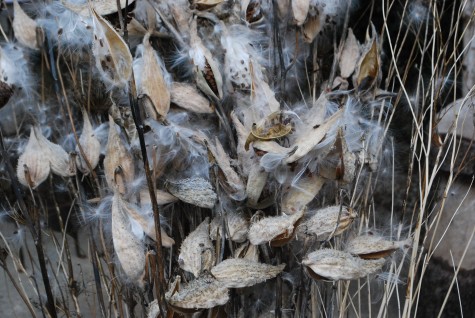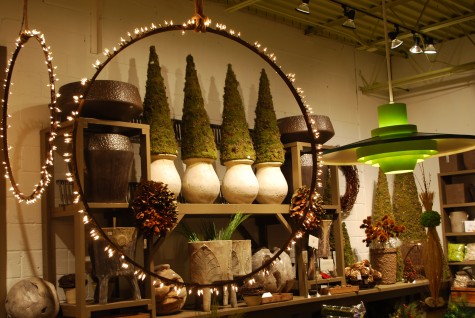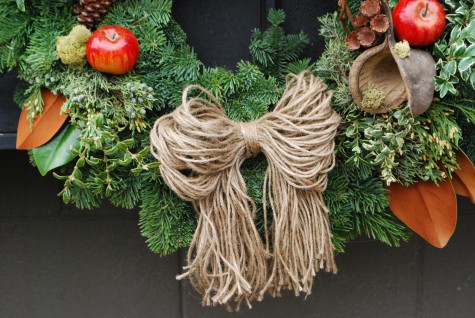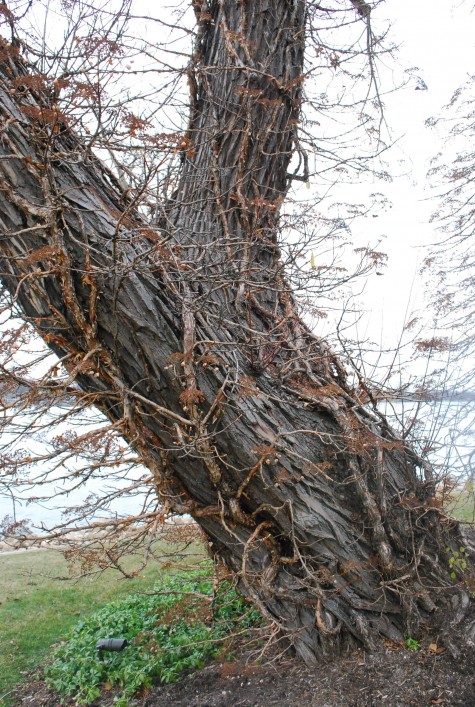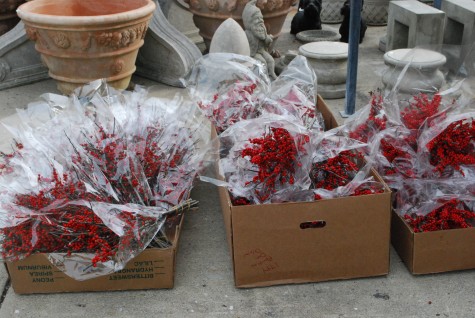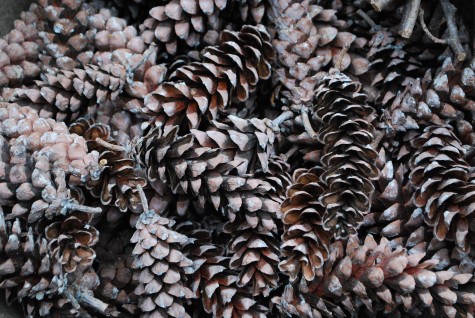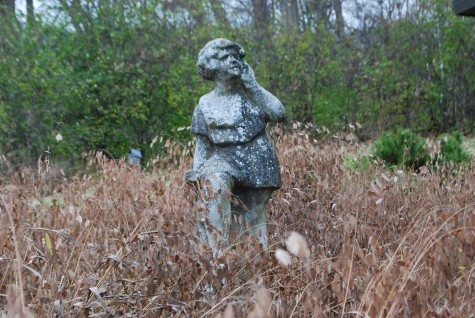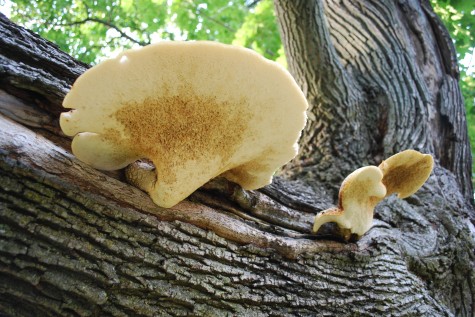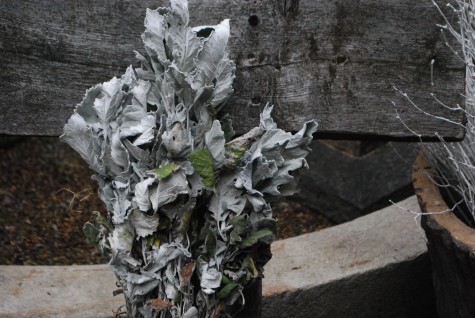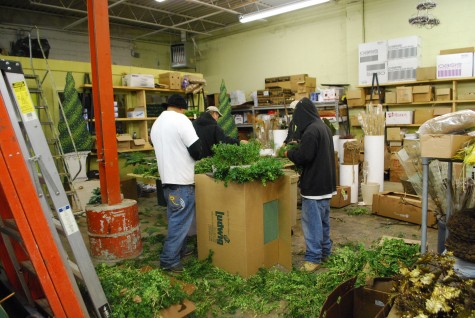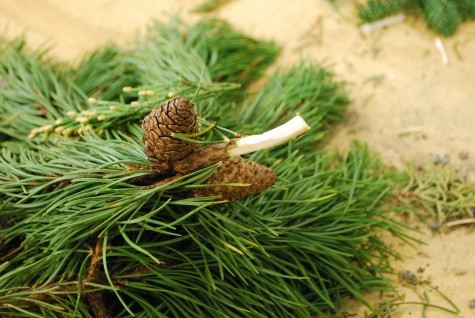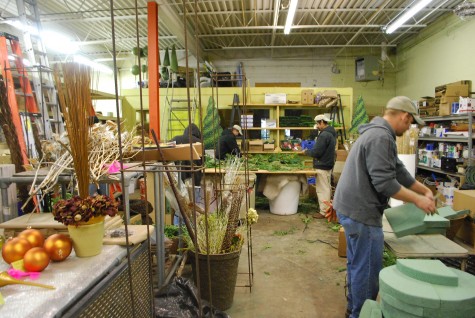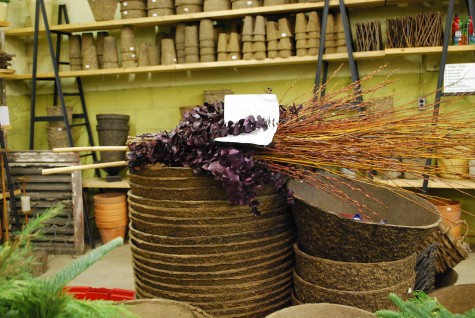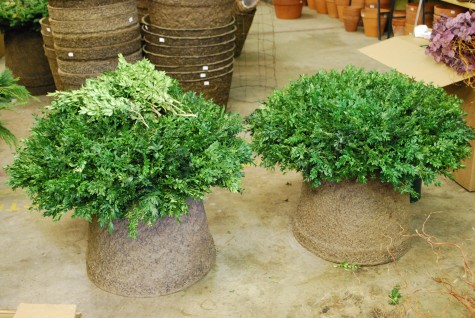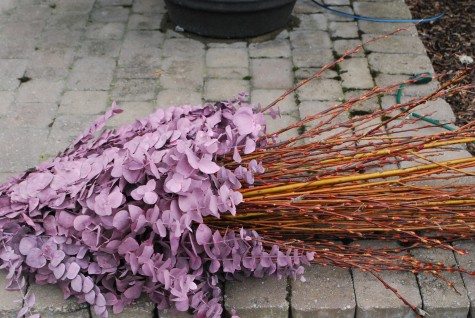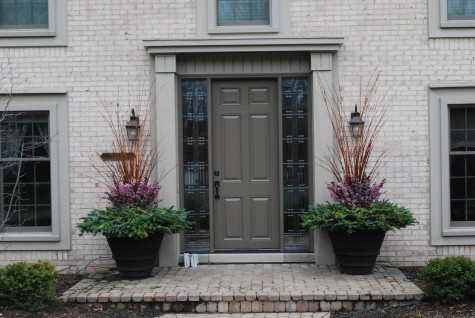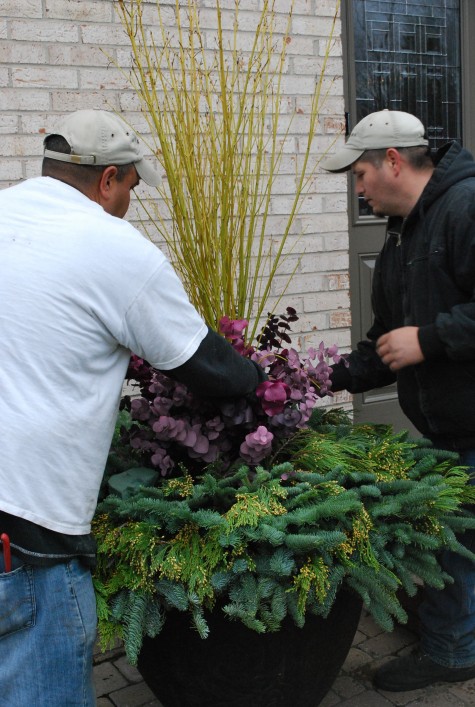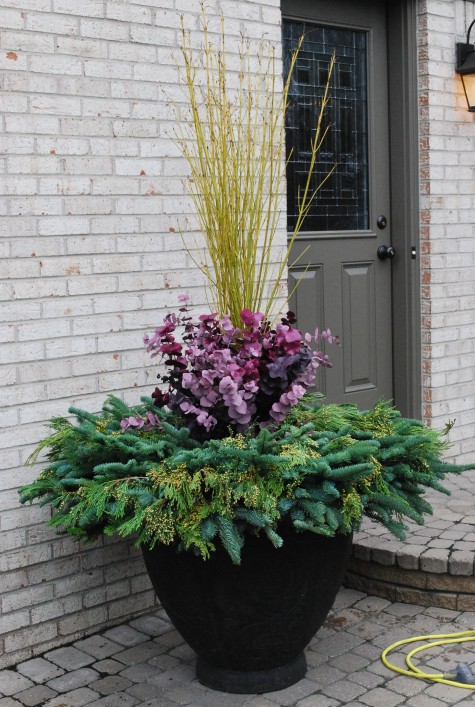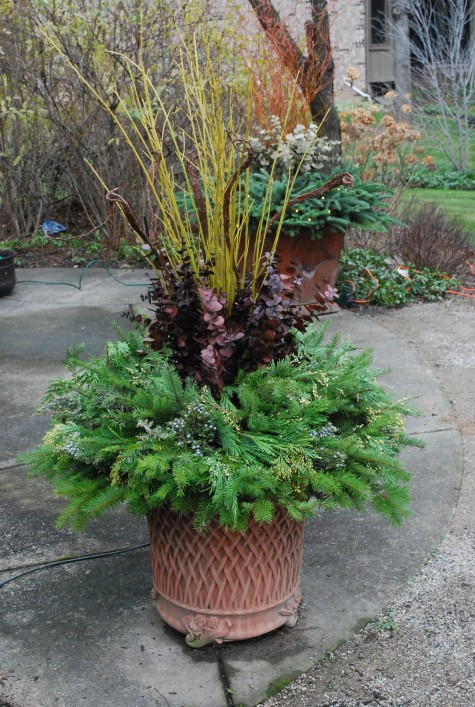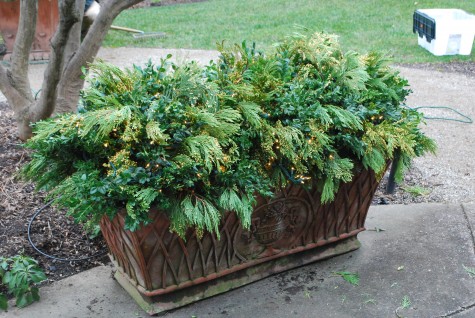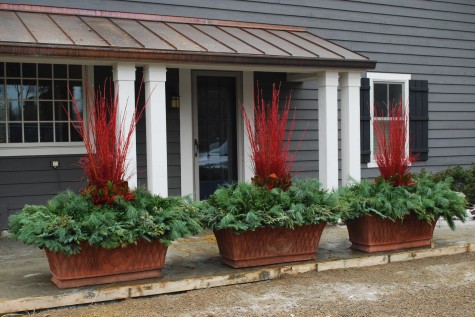
Should you be the person who hybridized the red twig dogwood cultivar “Cardinal”-many thanks for your efforts. I have just as many thanks to the branch farm that grew this dogwood. These fiery stems are stout and, and unblemished; these branches are the brilliant red you only get from fresh growth. I was never so diligent cutting my dogwood back to the ground-mainly as the shrub would look like heck most of the following season. I like using multiple bunches of professionally farmed twigs, when I have big containers to fill.
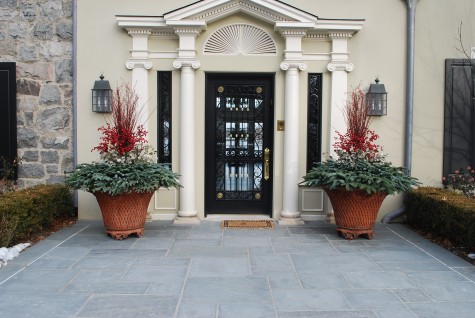
It is tough to go wrong, if your materials are beautiful. A well grown perennial takes root fast. A big juicy tulip bulb will mean big juicy flowers in the spring. What fistful of beautifully grown fresh flowers looks bad in a vase? All of the materials in these two pots were beautifully grown; this lends a formal and elegant air to the arrangements.
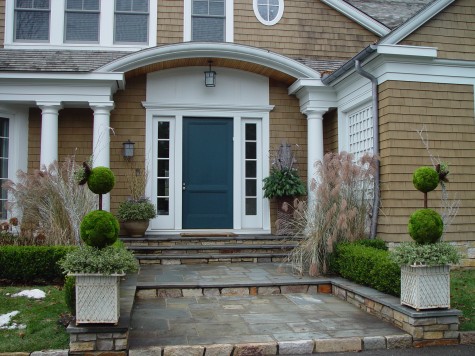
The work involved in creating any container garden makes me ask in advance for good materials. This applies to any plant-whether it be a perennial, a tree, a shrub, or a bunch of cut roses. I tell clients all the time that the effort to plant an evergreen with an undersized rootball and dead leader is exactly the same as the effort it takes to plant a healthy plant. Every spring I see rows of 6 foot arborvitae that deathly shade of orange brown. If you do buy marginally healthy plant material, then make the committment to baby them along.

This client will not be lounging out much this winter, but that is not for lack of company. Materials for winter pots especially need to be well grown and fresh-they have a very long winter ahead of them. Greens cut too early and shedding needles in November-not a good sign. Shake before you buy, or cut at home. Fresh silver dollar eucalyptus fades to a papery taupe fast; it does not hold its fresh blue color. That is fine for some-but maybe not fine for you. This preserved lilac and purple eucalyptus bravely shrugs off the winter. Long about February 20 I will like this a lot.

Stick stacks-how I love them. It has been several long years I have done without them. The stems are shaved into squares-that process makes them absorb water unequally on each surface-they fan out and curve unpredictably when they absorb water. Every year I hope I will find a source for them again. I take that back, I don’t hope. I look long and hard for them. Ting-those incredibly tough and wiry palm stems-easily survives our winter. They may not be native, but they obligingly fit into a midwestern winter color scheme.
 I like dressing a summer topiary form in lights for the winter season. The red faux money plant picks will reflect that light at night. Some daytime sparkle is good-but nighttime sparkle is more than welcome. The dark red dogwood stems-I do not know the name of this cultivar. I just know the color seems right.
I like dressing a summer topiary form in lights for the winter season. The red faux money plant picks will reflect that light at night. Some daytime sparkle is good-but nighttime sparkle is more than welcome. The dark red dogwood stems-I do not know the name of this cultivar. I just know the color seems right.
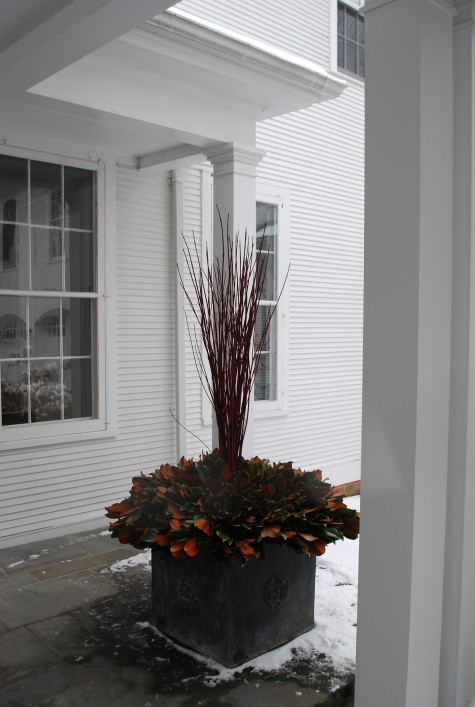
I don’t know a cultivar name for black twig dogwood either. But I do know these purple black stems pair well with cut magnolia. The lead squares, the black dogwood, the dark green magnolia leaves with their rich brown obverse-a striking foil to this house clad in white painted wood. Should you favor an arrangement made from dark materials, place them in front of something lighter. Dark materials need some lighting.
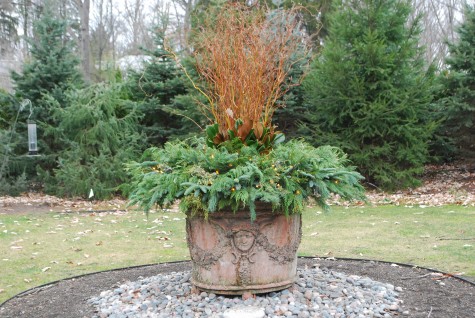 RA2, these few sentences are for you. I know you could barely bring yourself to drain your fountain for the winter. This does not mean you have to tarp it. See, this fountain has a winter life ahead of it. Given its size, the foam that securely holds the cut greens requires a circular support of exterior ready plywood. Curly flame willow provides lots of volume without the need for so many stems. The lights in the mixed into the mixed evergreen stems-stick around. This will look even better later in the day.
RA2, these few sentences are for you. I know you could barely bring yourself to drain your fountain for the winter. This does not mean you have to tarp it. See, this fountain has a winter life ahead of it. Given its size, the foam that securely holds the cut greens requires a circular support of exterior ready plywood. Curly flame willow provides lots of volume without the need for so many stems. The lights in the mixed into the mixed evergreen stems-stick around. This will look even better later in the day.

These two Belgian wood planters-still one of my favorites though I did them many years ago. Three stiffly vertical bleached willow bunches are surrounded with an equal number of giant stick stacks. How those stacks curved so beautifully, unexpectedly and asymmetrically-I had nothing to do with that outcome-but I sure do like it. The natural bristle snowflakes-a winter ornament of perfect scale, and completely in keeping with the overall arrangement. Handsome.


